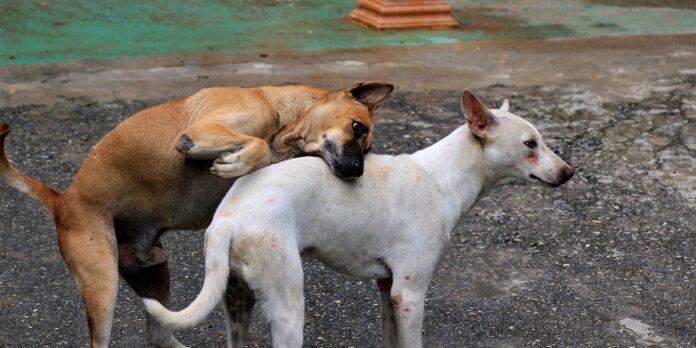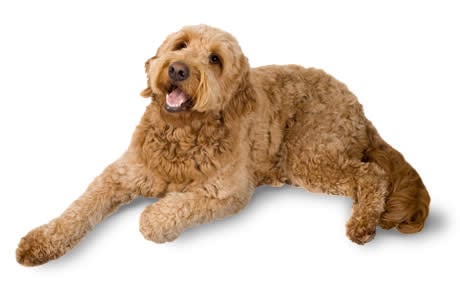Last Updated on October 14, 2023 by Fumipets
Stud Dog Fees When Breeding Dogs (2023 Update)
Breeding dogs often involves utilizing a stud dog to sire a litter of puppies. Understanding the concept of stud dog fees is crucial for dog breeders and enthusiasts. Here, we delve into this topic through five key questions and answers.
Stud Dog Fees When Breeding Dogs
Dog breeding may be quite profitable since many breeds sell for high prices. Also, it’s a fantastic opportunity to learn about dogs, and as you get skilful, you may even want to experiment with mixing different breeds to create something wholly original.
Yet, it’s normal to have a lot of questions when you’re just starting off. One that comes up regularly is the price of studs. Continue reading if you want to learn all you need to know about dog stud costs and how to start breeding your pet.
What Is a Stud Dog?
A certified male dog that breeders employ for breeding is known as a stud dog. The stud is sound and intact, ranging in age from 7 months to 12 years. The majority will have certified records that detail the dog’s whole history, ancestry, and genetic make-up so you can prevent health concerns and other difficulties when breeding.
How Do You Use a Stud Dog?
The contract defining the requirements and conditions of the breeding is written by the owner of the stud dog. The contract is reviewed by the owner of a female dog (queen or bitch), who then signs it if the conditions are acceptable and permit the mating of the two dogs. Typically, the contract will include how much it will pay to use the stud and how much time the dogs would spend together. It could also specify if you have to have the offspring spayed or neutered or whether you can use the offspring for mating.

Choosing a Stud for Your Queen
The success of your breeding program depends on the bull you choose to mate with your queen.
Genetics
Each prospective stud for your queen should have records outlining its whole genetic background, including information on both the dog in question and all of its forebears. How many generations have passed since an animal experienced hip dysplasia or a particular form of cancer should be able to be determined. You may use this information to estimate the likelihood that your pups will have certain health issues. Before moving on, you must thoroughly go through the paperwork to have a comprehensive picture of the stud’s health.
Previous Success
If the stud in issue has fathered any other pups, you may be able to inspect them to gauge the quality of the offspring. There is a strong possibility you will also get competition-quality pups to start your new breed if the male dog has produced competition winners in the past. Avoiding dogs that produce offspring with hip dysplasia or other health problems is advised.
Compatibility
The only thing left to do is to confirm that the healthy stud will produce pups of the highest quality after you are sure you have located him. Ideally, you have included some time in the agreement for the two dogs to get to know one another and determine if they get along. Everything is great if the two dogs interact amicably and seem eager to mate, but if, after several efforts, they begin to quarrel or snarl at one another, you may need to choose a new stud for your Queen.
How Do I Know If My Stud Is of Breeding Quality?
Your dog may serve as a stud if you have an unaltered purebred dog with no family history of dysplasia or another genetically transmitted illness and evidence of that history in written form. If you haven’t already, you should register your dog with the relevant kennel club for your breed. It also helps to obtain current veterinary confirmation of the dog’s good health. Then, all that’s left to do is advertise to attract future queens.

How Often Can I Rent Out My Stud?
Sperm collection typically starts 2-3 days before breeding and lasts for 3 to 5 days. Nevertheless, the majority of owners advise allowing the dog plenty of rest in between since it might drop the sperm count and decrease the probability of conception. We advise giving the dog at least two days of recuperation between training sessions.
How Much Is a Stud Fee?
The stud cost for the majority of stud owners is typically between $250 and $1,000, however it may vary greatly depending on the breed and general well-being of the dog. Also, it’s typical for stud owners to accept the first selection of the litter as payment rather than cash. This enables the owner of the stud dog to get a new canine stud for the future.
Conclusion
Some breeders utilize having and renting out a stud as a full-time career, and it may be a terrific way to earn additional money. Although selecting a sire may be challenging and time-consuming, persistence and attention to detail can enable you to produce a healthy litter of pups that will set you on the road to success as a breeder.
Frequently Asked Questions
What Are Stud Dog Fees?
Stud dog fees are charges paid to the owner of a male dog (the stud) for the privilege of breeding with a female dog. These fees can vary widely depending on factors like the stud’s pedigree, health, and reputation.
How Are Stud Dog Fees Determined?
The fees are determined based on several factors, including the stud’s breed, lineage, accomplishments, health certifications, and the breeder’s reputation. A highly sought-after stud with a strong pedigree may command higher fees.
What Is Included in the Fee?
Stud dog fees typically cover the cost of the mating process, which includes the use of the stud, breeding supervision, and sometimes artificial insemination. Any additional expenses, such as veterinary care for the female or travel costs, may be negotiated separately.
Are There Different Fee Structures?
Yes, there can be various fee structures. Some breeders may charge a flat fee, while others request a “puppy back” arrangement, where the stud owner receives a puppy from the litter instead of a cash fee.
What Should You Consider When Negotiating Stud Dog Fees?
When negotiating stud dog fees, factors like the quality of the stud, the stud owner’s reputation, and the intended use of the puppies should be considered. A written agreement detailing all terms is advisable to prevent misunderstandings.
In conclusion, stud dog fees are an integral part of the dog breeding process. Understanding how these fees work and the factors that influence them is essential for successful and ethical breeding practices.


















